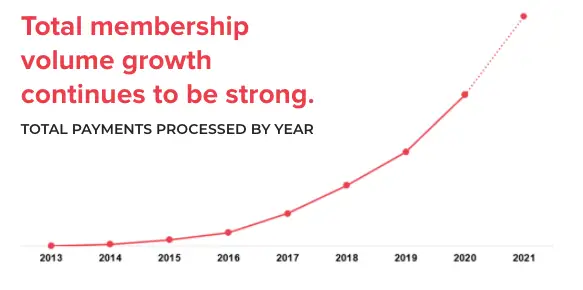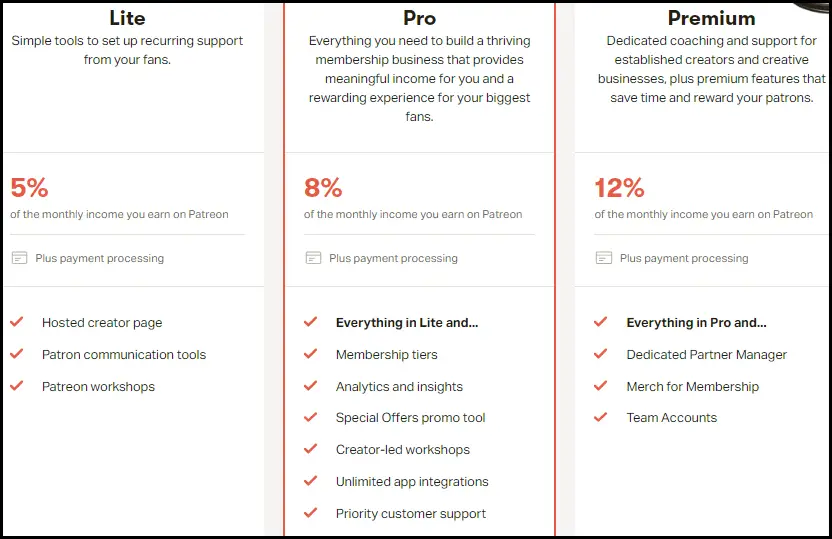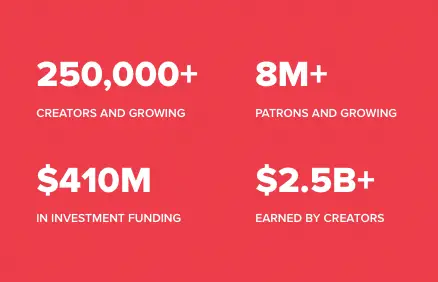In 2013, Jack Conte was just another YouTuber Creator among a sea of them. Today, he is the CEO of Patreon, the world’s leading creator platform, using which creators around the world have earned more than $3.5 billion as of 2021.
How did he go from being a YouTube Creator, without technical chops, to heading the world’s largest creator platform? Well, Conte’s story is as much his as it is Patreons’. So, let’s look into Patreon’s founding story.
And post that, we will also walk you through a bunch of other stuff — like how exactly Patreon works, business model pivots, current business model & the competition it faces going forward.
How Patreon Started
Before Patreon, Conte was a reasonably famous musician thanks to Pomplamoose, a musical duo he started with his then-girlfriend and now wife Nataly Dawn in 2008. Several respected record labels offered to collaborate with Pomplamoose.
Still, the duo decided against going ahead with any of them because it was possible to distribute music without compromising monetarily or creatively, with the rise of YouTube & other direct-to-fan platforms.
After some initial success, came a three-year period, in which the YouTube ad revenue dried up. Despite having around 1 lakh subscribers and getting millions of views, they were making an average of $100 from a single video.
Frustrated with being not rewarded proportionally for the effort that went into the videos, Conte came up with the idea of what we now know as Patreon. He believed that a small subset of subscribers — ones we could call super fans, would be happy to support creators financially, and keep doing so in a recurring fashion.
Unable to write the software himself, he created a mock-up on printed paper and reached out to an old Stanford University roommate. Sam Yam, now CTO of Patreon, was already an established name in the world of startups at the time.
He was one of the first engineers at Loopt, a social-mapping startup, acquired for $43 million in 2006. Post Loopt, he founded a startup called AdWhirl, which got acquired in 2009 by AdMob, which then Google acquired later.
After a short stint at Google, Sam dabbled, with a few startup ideas. But when Conte reached out, his idea struck a chord with Sam.
Sam wrote the code for the first version of Patreon & Conte tested it in a music video encouraging his viewers to support future videos using Patreon.com.
Habituated to making $100 on average per video, Conte was pleasantly surprised to see his fans commit $5000 per video to fund him within the first few weeks of the announcement.
The buzz around Conte making thousands of dollars in patronage triggered hundreds of other creators to sign up. Ironically, Conte had reached out to 40 creators before launching Patreon, but none of them showed any interest whatsoever.
Over the years, Patreon saw an acceleration in the number of monthly active paying customers (Patrons).
It took them around four years to reach the 1 million patrons milestone from May 2013 to May 2017. Then it required a year to get to 2 million patrons by May 2018. By January 2019, in less than a year, Patreon had 3 million patrons.
It reached the 4 million patrons landmark in November 2019. By 2021, the number of patrons had doubled to 8 million-plus.

How Patreon Works & How it Makes Money
For creators, the advent of the internet turned the dynamics of creation on its head. Distribution and earning attention became more accessible than they had ever been.
Not only did it give rise to new professions like podcasters, gamers & solo journalists, but it also provided a boost to older ones like writing, music & visual arts.
But like many things, it came with its own set of disadvantages. Creators could monetize their craft on ad-supported platforms, but they had no say in defining how much it was worth.
In 2018, Fortune reported that the top 3% of the most-viewed YouTube channels only made around $16,800 from advertising in a year, and the remaining 97% made even less.
To put things into context, the average yearly income of a Truck Driver in the United States is $60867. Not to say that becoming a YouTuber is not a viable career path at all, it is that relying only on YouTube ads to make money isn’t sustainable.
How much money a YouTuber makes depends on the business plan wrapped around the channel. Some leverage influence by promoting brands, some launch merchandise stores & some sell paid courses.
At its heart, what Patreon helps creators do is go beyond the ad-based income by giving them the tools required to build and grow a fan-based membership business.
The core product comes with a customer relationship management system, content management system & member analytics. And that’s not all.
Patreon goes a step beyond providing software, acting as a digital manager of sorts for creators — giving creators advice on business strategy, proactively guiding them on how to re-engage patrons likely to churn & handling product-related questions from Patrons’.
In an interview with Techcrunch, SVP of product Wyatt Jenkins said,
“We’re not here to help them do art. They don’t need help doing art. We’re here to be their hard-core business manager friend who is like ‘no no no, you need to do this.”
And going the extra mile makes sense from a business perspective as well because the companies incentives align with the creators.
Patreon’s business model is simple — it only makes money when creators do. Patreon has three different creator membership tiers — Patreon Lite, Patreon Pro & Patreon Premium with commission rates of 5%, 8%, and 12% respectively plus transaction fees. The more money the creators make, the more Patreon’s commission.

Different tiers come with perks customized for creators of various sizes. From the manner membership pricing and perks are anchored, seems like Patreon wants to nudge medium-sized creators towards Pro and large-sized creators towards Premium, in turn increasing overall revenue.
Patreon doesn’t reveal revenue numbers like most venture-backed private startups. Still, the company announced in January 2019 that they were expecting to process $500 million to creators in 2019 alone, based on which we can make an estimate, if not a precisely accurate revenue calculation.
The important thing to note while making this estimation is that Patreon shifted a flat 5% take rate to variable tier-based take rates happened in May 2019. If we were to assume an average take rate of 7% for 2019, Patreons’ expected $500 million processed to creators would mean the company made $35 Million in revenue.
According to estimates, Patreon’s revenue increased to $160 million in 2021, double the $80 million the company made in 2020.

The statistics mentioned above give more perspective regarding the health of the business.
For a company that has paid more than $2.5 Billion to creators since its inception & raised $410 Million in funding, it seems unlikely that Patreon has even broken even financially, forget making a profit.
Patreon Vs Competitors
In Dec 2017, Patreon’s founder shared his take on what being an independent creator would look like in 2028. Of the six-point list, two are worth highlighting while discussing Patreon’s current competitors & the competition it is likely to face in the future.
1. There will be dozens of public companies that recognize “creators” as their primary addressable market.
2. Distribution platforms will be competing fiercely to get creators paid, which will give creators choice, leverage & more power.
While the first is yet to come true, creators have more options than ever to create memberships businesses even in 2020. Incumbents like YouTube & Facebook have already integrated membership subscriptions for creators within their platforms.
YouTube rolled out creator memberships in June 2018, Facebook launched Fan subscription in Feb 2019 — but both platforms take a 30% cut of the membership revenue, which is obviously higher than even Patreon Premium’s 12% take rate.
However, one significant advantage of partnering with YouTube & Facebook is that it reduces the friction involved in turning fans into members. With most of them logged in & a membership button right in front of them, fans don’t need to go through the hassle of creating a Patreon account to support creators.
Patreon envisions itself as becoming a central hub for managing the creator membership business, which it hopes to achieve by plugging itself into content platforms using the Patreon API. But if platforms see the integration as competition to building their own membership features, the API strategy won’t help much.
And Patreon’s worries don’t end there. Other than incumbents like YouTube & Facebook, it also faces competition from not completely similar but like-minded companies like Kickstarter (best for one-time projects), Substack (kind of like Patreon for writers ), Memberful ( selling subscriptions through your website ) & many more.
Read More Case Studies
Zoom Business Model Case Study
WhatsApp Business Model case Study
TikTok Business Model Case Study

